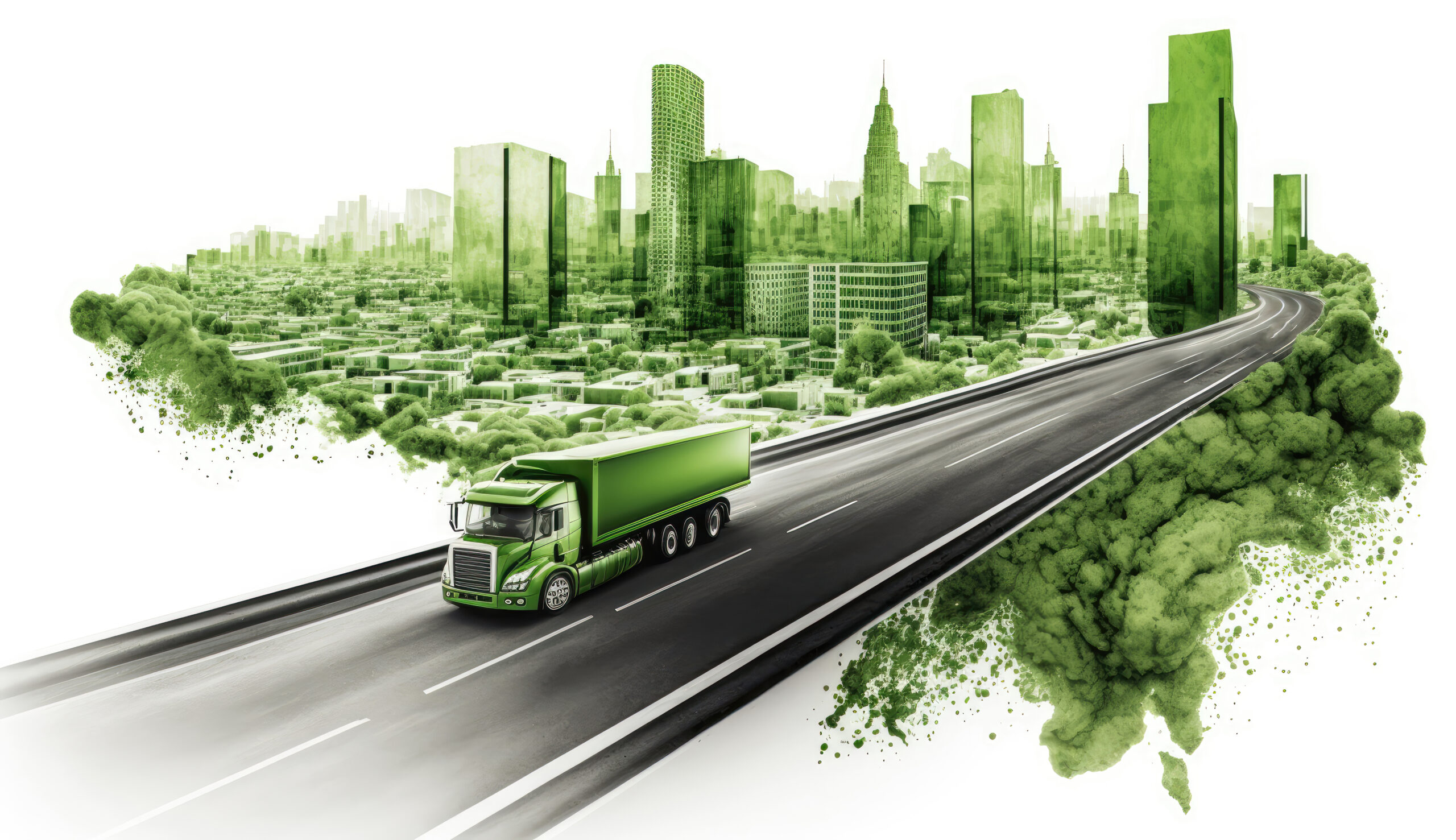
Intro
Supply chains may involve a number of steps — manufacturing, importing, exporting, and transporting goods by air, land, and sea. That’s why improving sustainability in the supply chain can be so complicated. Unless everyone participates, progress may be slow, at best.
With climate change now an undeniable reality, regulators have been increasingly rolling out rules to implement green logistics. In the trucking sector, those rules focus on reducing emissions, and the penalties for non-compliance could be significant.
In this post, we’ll talk about why green logistics matters and how fleets are doing their part to improve sustainability in the supply chain.
What Is Green Logistics?
Green logistics is the integration of environmentally friendly practices and systems that promote sustainability, reduce carbon footprint, and reduce waste. In the transportation sector, green logistics focuses on minimizing emissions and increasing fuel efficiency, while also operating within budget constraints.
Why Is Green Logistics Important?
Green logistics is not an option but a necessity. The benefits of embracing green logistics include reducing your fleet’s carbon footprint, decreasing fuel consumption, and lowering maintenance costs. Additional benefits include:
Compliance
The California Air Resources Board (CARB) has developed regulations that aim to achieve zero emissions for medium and heavy-duty fleets. The regulations require drayage vehicles to begin transitioning to zero-emission technology in 2024 and be fully compliant by 2035. Regardless of where a fleet is based, it must comply with CARB regulations if its trucks operate in California.
Read more about emissions regulations — including a timeline of their development — in our related post.
Supply Chain Expectations
Some multinational corporations (MNCs) are increasing their efforts to improve corporate social responsibility, and part of that movement is taking a closer look at all of their supply chain relationships. A Harvard Business Review study found that several suppliers began working to reduce their carbon footprints, based on the scrutiny of MNCs.
Cost Savings
In June 2023, the American Transportation Research Institute reported that truck operating costs had reached an all-time high, with fuel costs accounting for $25.84 per hour, per vehicle. Even if implementing green technology requires an initial investment, it’s clear that improving fuel efficiency could dramatically reduce costs for large fleets.
Environmental Stewardship
Retrofitting trucks with fuel-saving technology could reduce carbon dioxide emissions by 50 million tons per year and reduce fuel consumption by 4.50 billion gallons per year. Those facts illustrate how the trucking sector could — with green technology that’s already available — have an immediate and positive impact on the environment.
Key Trends in Green Logistics for Class 8 Fleets
Now let’s look at how fleets are using technology to reduce their carbon footprint.
Emissions Monitoring Tools
Controlling emissions begins with understanding what your output is. Emissions monitoring technology collects information about MPG and fuel consumption for every truck in your fleet, and then stores it in a central dashboard. This data can help fleet managers spot vehicles with excessive emissions and calculate overall fleet CO2 emissions.
Electric Vehicles (EVs) and Alternative Fuel
EVs don’t burn fossil fuel, which makes them an appealing option for fleet managers looking to reduce fuel costs and carbon emissions. EV adoption may be sluggish, however, due to the high initial investment. Fleet managers looking to replace diesel trucks with EV trucks may be able to find tax breaks and other incentives that offset the investment costs.
Alternative fuel trucks — like those that run on compressed natural gas (CNG) — also offer lower emissions than diesel trucks. But CNG trucks can be refueled only at CNG stations, which are scarce in the far northwest and northeastern United States. Upgrading to CNG fleets may be an option in areas with CNG filling stations, but it may be years before CNG infrastructure is robust enough to support nationwide fleets.
Predictive Maintenance
Predictive maintenance uses telematics to monitor truck performance and driving conditions and alert fleet managers when maintenance is required. That means fleets can be proactive about maintenance and ensure trucks are running efficiently, rather than wait for costly breakdowns.
Idle-Reduction Technology
Long-haul truckers are required by law to take rest breaks, and when resting, they may leave engines running to keep the cab at an optimal temperature. But rest-period idling produces about 11 million tons of CO2 per year, as well as harmful nitrogen oxides and particulate matter.
Idle-reduction technologies aim to improve cab climate control without the engine running. Examples include:
- Auxiliary power units that run on diesel, electricity, or alternative fuels
- Diesel-powered cab or bunk heaters
- Battery-electric air conditioners that recharge in transit and plug into external power at truck stops
Simple Ways to Implement Green Logistics
Optimize Routes
Manual route-planning is inefficient, and relying on GPS alone won’t optimize routes because apps like Google Maps and Waze don’t “know” the variables that impact routes. For example, if drivers need to deliver multiple shipments at separate destinations between specific hours, a simple GPS tool doesn’t have the depth to plan the best route.
Intelligent route-planning software can streamline routes to minimize drive time. It also helps prevent idle time — which can happen when drivers arrive too early to unload — and missed delivery windows. That increased efficiency saves fuel.
Decrease Empty Miles
Here’s a scenario that happens frequently: A truck delivers a shipment to Point B then returns to its base at Point A. Another truck arrives at Point B to transport a shipment to Point A, then returns to Point B. In each case, a truck is racking up “empty miles,” which burns a lot of unnecessary fuel.
Backhauling is a solution to this problem. Using a software solution, fleet managers can find loads for a truck’s return trip, which also boosts revenue.
Reduce Aerodynamic Drag
Aerodynamic drag is unavoidable when traveling at highway speeds. But there are some ways to minimize the impact of aerodynamic drag, which can reduce fuel consumption significantly across large fleets.
TruckWings is an aerodynamic device that easily installs on the rear of the cab and closes the gap between cab and trailer at speeds above 52 mph. The “wings” collapse flat against the cab when speed falls below 50 mph, so they never interfere with low-speed maneuverability.
Each TruckWings device reduces CO2 emissions by 20,000 lbs per year and reduces fuel consumption by 3-6% per year — potentially millions of dollars in savings for a large fleet.
Go Green With TruckLabs
TruckLabs created TruckWings out of a desire to make a positive impact on the environment. With TruckWings, you can improve your green logistics without replacing your entire fleet with EV or alt-fuel trucks. And if you do upgrade your fleet, you can use TruckWings to further improve the efficiency of your new trucks.



